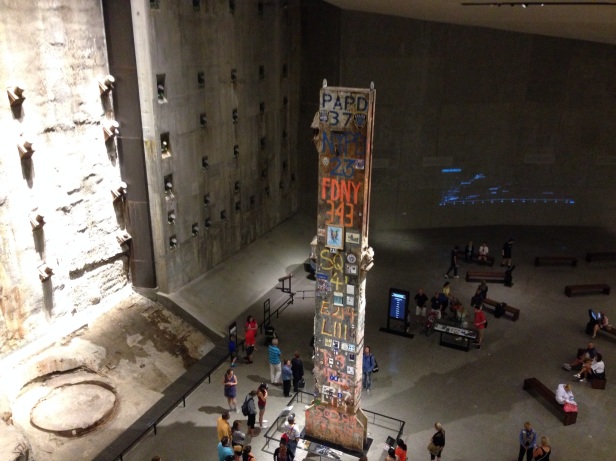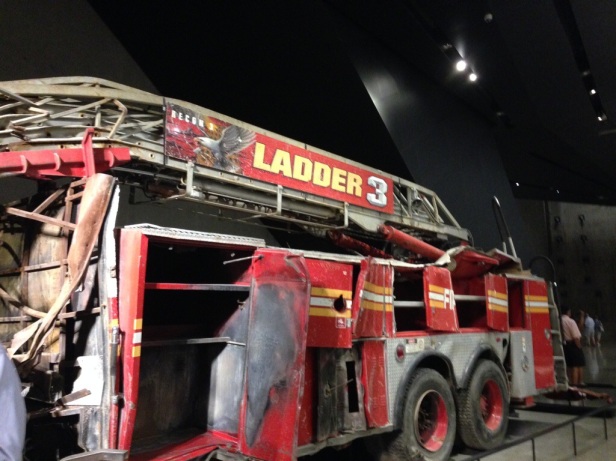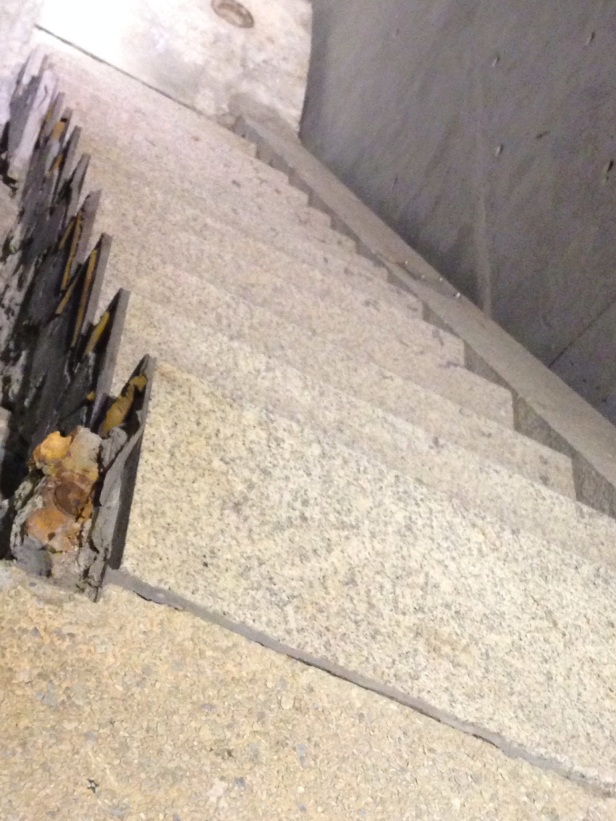The night before we were scheduled to visit the 9/11 Museum in New York last summer, we received a devastating news that Bob, my father-in-law, had passed away. Keith took the earliest flight to California to be with his family. The kids and I stayed in New York City, following my brother-in-law’s advise to continue our vacation.
The September 11 Memorial Museum was not the most appropriate place to visit, especially after the death of a loved one. But since we had already bought the tickets months in advance, we decided to stick with our scheduled itinerary. We arrived at the museum, eyes still swollen from crying all night. It took us a while to get the courage to begin the tour, knowing the stories we were about to deal with concerned death. We sat for an hour at the cafe on the top floor, still in disbelief that Bob was gone.
All of the events that took place on September 11 were completely presented. Not a tiny detail was spared surrounding the event. Everything— from the recorded voice messages of the victims to their loved ones saying their goodbyes to the difficult-to-watch videos of people falling from the tower—were all shown to the public. Everyone had tears in their eyes.
Joshua was only 3 years old and Jude was not even born yet on September 11, 2001 but what they witnessed inside the memorial museum was something they will never forget.





The first tenants moved into 1 World Trade Center (North Tower) in December 1970 and into 2 World Trade Center (South Tower) 13 months later, before construction of either skyscraper had been completed. The world’s tallest buildings were dedicated in a ribbon- cutting ceremony on April 4, 1973. This stainless steel pedestal was installed on the five-acre Plaza to commemorate the occasion.
“No day shall erase you from the memory of time”- Virgil






First my sincere sympathy on the passing of your Father in law. Wishing comfort for all of you.
I have not been to the memorial. Seeing it through your photos and narrative moves me sitting at my computer. I can not imagine the emotional impact to visit in person.
LikeLike
Thanks Sue! I wish I had a better camera. Nevertheless it still captures the emotion on that fateful day (Sept 11). It took me a a few months to write this post.
LikeLiked by 1 person
Coincidentally I recently read another post about the memorial and the blogger said the same thing. It took her several months to compose herself to write it.
LikeLike
I think we all share that same feelings when we go there. For me it was the difficulty of hearing some of the voices I heard saying their goodbyes and at the same time, reminding me that I didn’t hear my father-in-law’s voice before he died. Last I heard from him was a week before his passing, texting me about a restaurant in Washington DC (suggesting for me to try).
LikeLiked by 1 person
I can appreciate the weaving of these two events would have an intense emtional effect. Wishing you peace.
LikeLiked by 1 person
Excellent post – a special place, I hope to visit one day, sad anyway it must have been very difficult for you. I commend your bravery in keeping going and visiting on what must have been a very hard day.
LikeLike
Thanks Joy! I hope you can visit someday. It was sad but at the same time, I’m glad my boys were able to see the events that took place during September 11. They have a better understanding now. Thanks for dropping by. I appreciate it!
LikeLiked by 1 person
This had to have been an even more moving visit than it would have been otherwise. This was a very poignant post, thanks for sharing these photos, I doubt I would see this otherwise. And sending sympathies for the loss of your father in law.
LikeLike
Thanks Angeline. It was difficult to write this post…..
I wish I could’ve taken more photos but the most interesting parts of the museum were no cameras allowed. Hope you can visit someday. I promise you will find it very interesting.
LikeLike